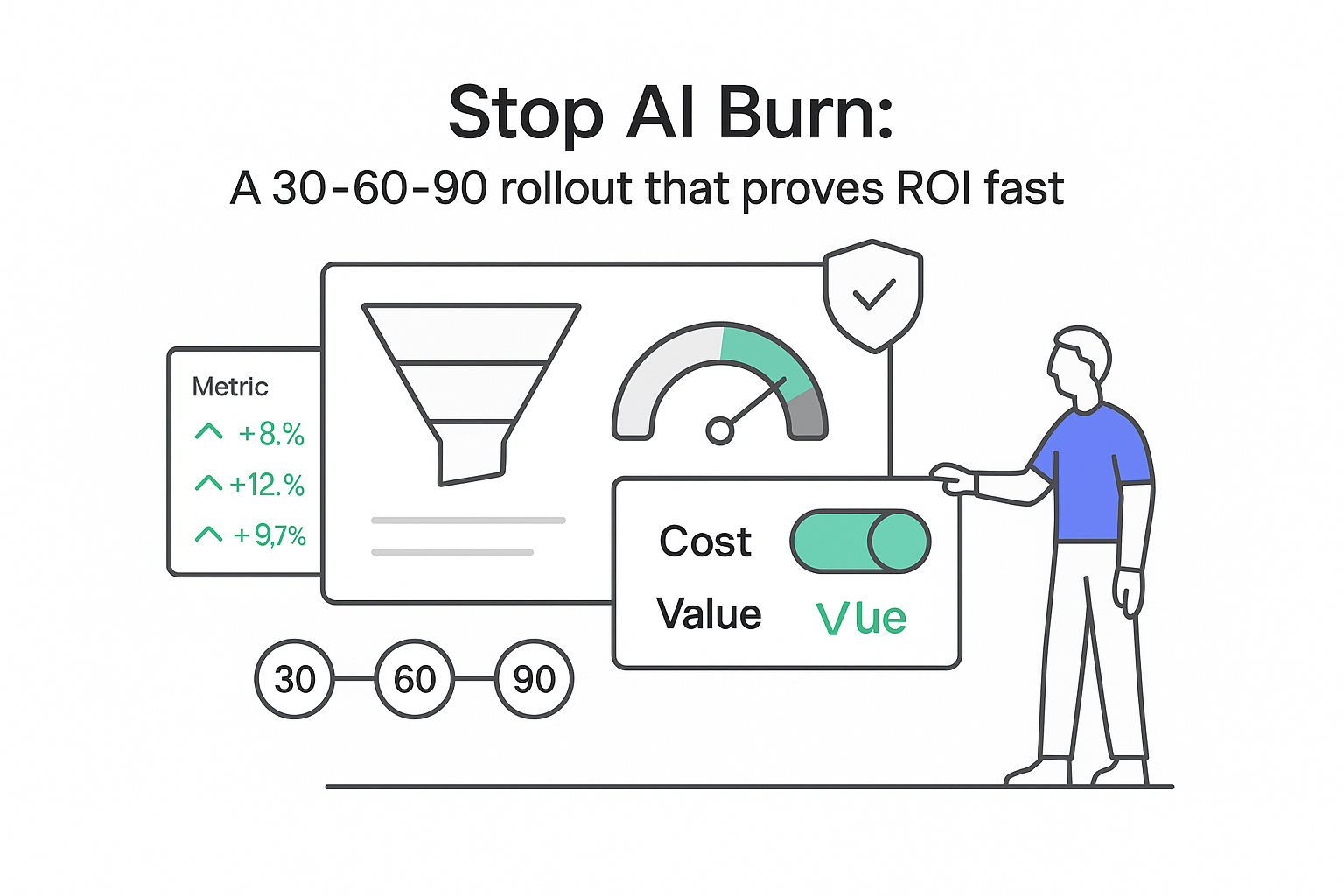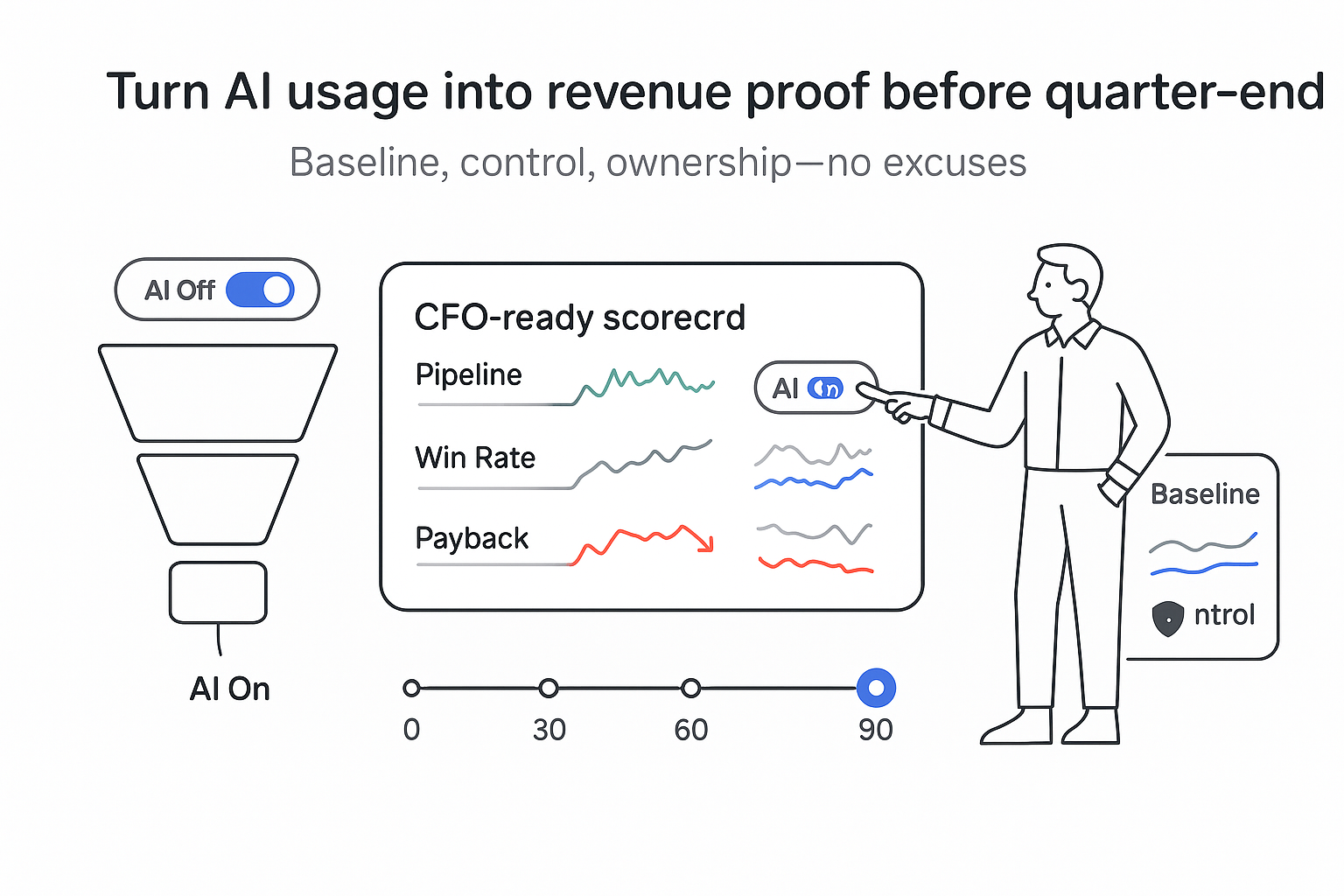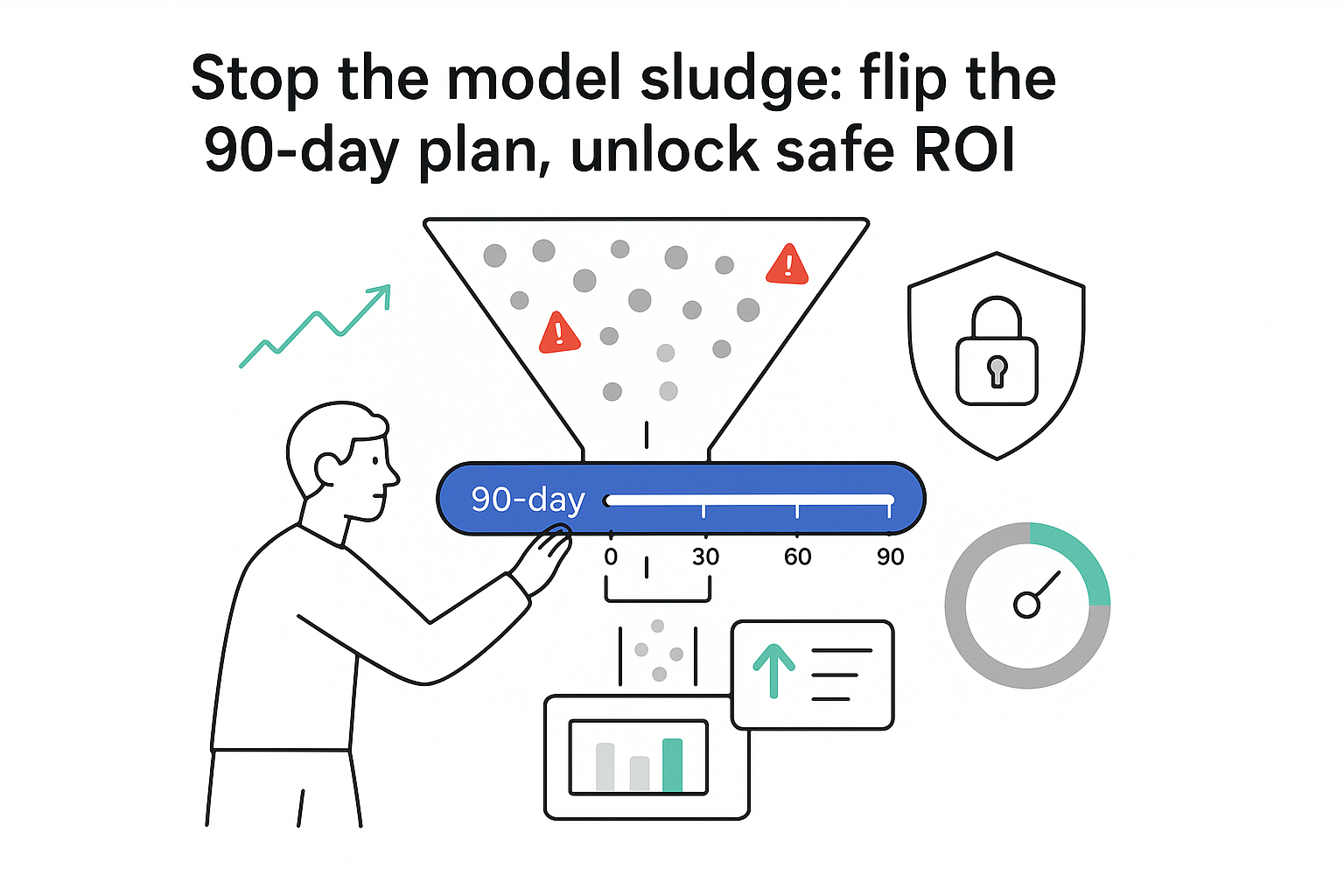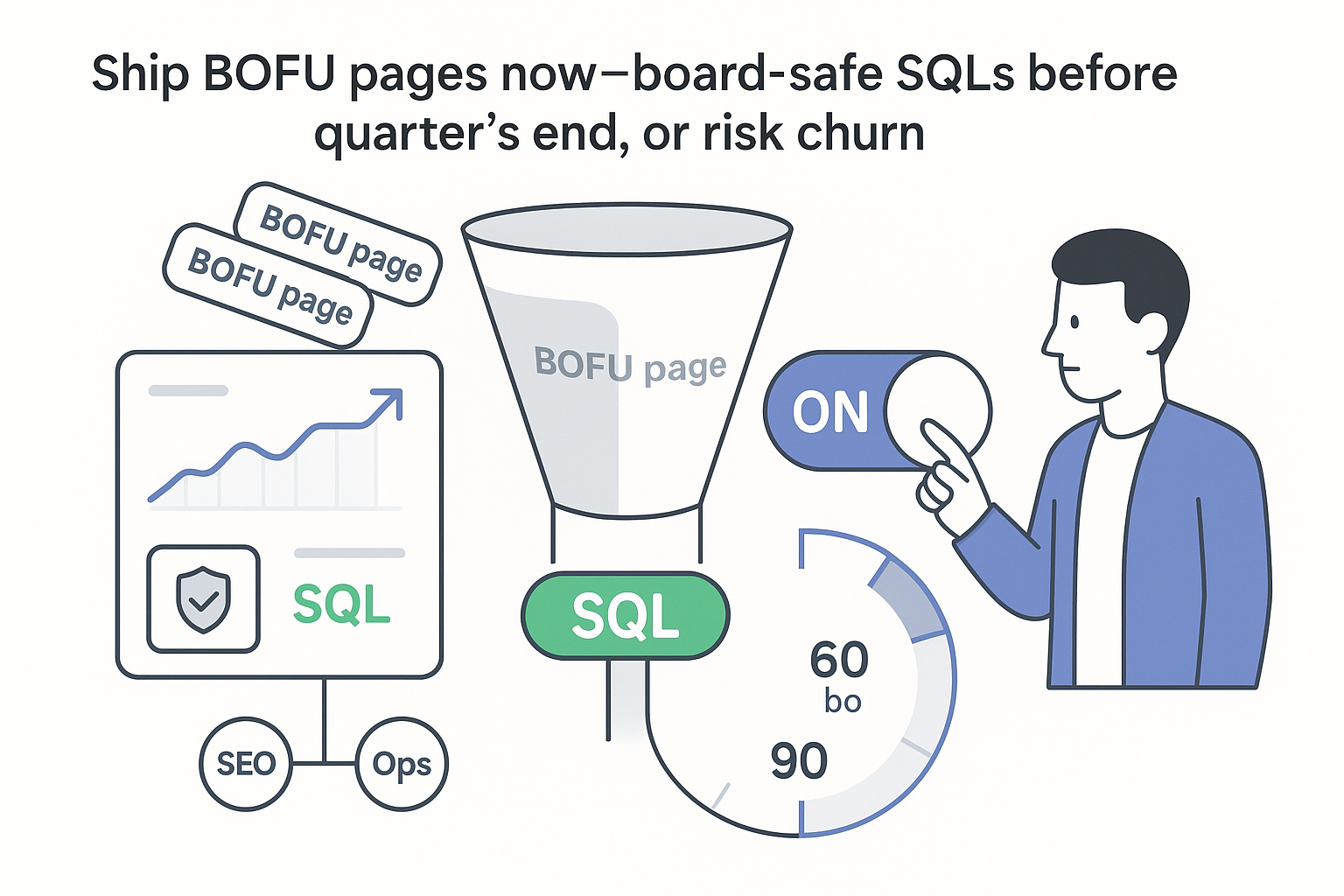I want AI to pay for itself. Not in theory, in pipeline. If I run a B2B service firm, I don’t treat AI like a side project. I run it like a go-to-market program with clear ROI targets, tight workflows, real guardrails, and people who care enough to make it stick. Here’s how I build that, piece by piece, without fluff or wishful thinking.
Strategy that starts with outcomes
AI feels shiny until it hits a quarterly target. I start with business outcomes, not features. I map each use case to a growth, cost, or quality KPI: pipeline growth, lower CAC, faster production, better lead quality. Then I pick a few use cases with the highest near-term yield and lowest friction.
A simple way I prioritize:
- Lead scoring and routing based on intent signals, account fit, and behavior; SDRs get context at handoff.
- Content generation and repurposing to draft long-form, turn webinars into articles, produce ad variants, and localize.
- Ad creative and bid optimization that generates variants, predicts likely winners, and syncs to channels.
- Sales enablement assets that summarize case studies, calls, and CRM context for prep.
- Marketing analytics QA that flags tagging gaps, outliers, and broken UTMs.
I score each use case on a 1-5 scale for:
- Impact on SQLs or revenue
- Impact on cost per lead
- Time to first result
- Data availability and cleanliness
- Team readiness
I pick the top two and ship those first. Visible wins create momentum and reduce the politics.
Baselines, ROI, and a 30-60-90 plan
I start where I stand. I pull the last three months for:
- SQLs per month and conversion rates by stage
- MQL→SQL conversion rate and any quality score I already use
- Time to publish for long-form content
- Cost per lead by channel and source
- Time from form fill to first sales touch
I use a simple ROI frame:
- Impact dollars = lift in conversion or output × volume × margin
- Net ROI = impact dollars − tech, training, and time costs
Examples I model as hypotheses, not promises:
- If time to publish drops from 10 days to 4 and output doubles at equal quality, I model expected traffic and SQLs from the added content.
- If AI-assisted lead scoring improves MQL→SQL by 20% on 500 MQLs per month, I show how many incremental SQLs that yields and what they’re worth.
Then I stage a 30-60-90:
- 30 days: Stand up tools and pilots. Use cases live: 1–2. Early KPIs: time to publish down ~25%, first SQL lift visible, draft-to-final rounds reduced by one.
- 60 days: Expand to 3–4 use cases. KPIs: MQL quality score up ~10%, cost per lead down ~10% on content-driven channels, time to first sales touch down ~20%.
- 90 days: Lock the system. KPIs: SQLs up ~15–25%, time to publish down ~40–50%, cost per lead down ~15–20%, content acceptance rate above ~90%.
I run a one-page scorecard per use case:
- Owner, target KPI, weekly result, variance, last action taken, next action, risk, decision needed
I review weekly. Decisions beat dashboards.
Stakeholders and communication that reduce friction
In my experience, people resist unclear change more than they resist the tech. A concrete plan turns fear into focus.
Who does what:
- Executive sponsor sets the why, clears roadblocks, and signs off on risks
- Marketing leaders own use cases and results
- Ops and IT handle data, integration, and security review
- Sales leaders agree on handoff rules and quality thresholds
- Practitioners run workflows, log issues, and improve prompts or steps
My change narrative:
- Why now: pipeline pressure, content speed, and privacy shifts (e.g., cookie loss). Competitors are testing; planning cycles are real.
- What changes: a few workflows get AI steps and new reviews, plus a shared scorecard.
- How I measure: SQLs, MQL quality, time to publish, cost per lead, error rate.
- What stays the same: ownership, brand standards, and final human judgment.
A sponsor note I use:
- My aim is simple: shorten time to value and grow pipeline without adding chaos. I’ll start with two use cases, share results weekly, and keep humans in the loop. No job cuts tied to this program. I measure results before I scale.
Two-way mechanisms that keep it honest:
- Monthly pulse: what helped, what blocked, what to try next
- Office hours twice weekly for 45 minutes to review prompts, problems, and results
- Clear escalation path for quality, risk, or data issues within one hour
I keep an operating rhythm:
- Monthly executive review: one page on ROI, risks, and decisions needed
- Biweekly working session: owners show what changed and what they learned
- Weekly metrics pulse: SQLs, MQL quality, time to publish, cost per lead, output error rate, time to first sales touch
For more on trust and transparency in AI programs, see Building B2B Trust in the AI Era.
Role-based training that sticks
Training fails when it tries to turn everyone into an engineer. I keep it role-based and tied to daily work.
Curriculum by role:
- Executives: strategy, risk, and ROI modeling; what to approve and what to question
- Marketers: prompting, brand voice controls, and content workflows using SOPs in a sandbox
- Analysts: validation, metrics, experiment design; sampling, control groups, drift checks
- Ops and IT: integration, access, data rules, and logs based on the stack
Competency rubric:
- Beginner: uses templates and SOPs; spots obvious errors
- Skilled: adapts prompts, tunes workflows, sets guardrails
- Advanced: builds new workflows, tests models, teaches others, and reports on impact
A 2–4 week sprint I run:
- Week 1: kickoff, access, and safe basics; success is one usable output per person
- Week 2: hands-on with real assets; draft copy, QA scoring outputs, run a small test
- Week 3: role drills; execs review ROI cases, marketers refine style prompts, analysts build validation checks, ops wire a data path
- Week 4: demo day; show a result with metrics and publish a short internal write-up
When people know what “good” looks like and feel safe practicing, adoption accelerates.
Experimentation with guardrails
Great programs learn in public. I use a light test framework that rewards curiosity and evidence.
What I capture in an experiment brief:
- Hypothesis and expected lift
- Design: control vs treatment, sample, and test length
- Guardrails: max spend, brand checks, approvals
- Metrics: primary KPI plus one or two supports
- Risks and a clear stop rule
- Owner, approver, and end date
A simple pilot example:
- AI-assisted landing page variant
- Treatment: AI drafts from a prompt library; human edits to brand standards; legal review; publish
- Success: conversion rate lift of ~10% at 95% confidence, equal or better bounce rate, no increase in support tickets
- Measurement: well-tagged events with a clear weekly view
I keep a shared repository by use case that stores prompts, inputs, outputs, metrics, final decision, and what I learned. I tag outcomes as win, loss, or mixed. Mixed is fine; that’s where a lot of learning hides.
I recognize learning, not just numbers. A clear insight gets airtime.
Governance and process integration that scale
Guardrails aren’t red tape. They speed me up by removing guesswork.
Acceptable use and human review:
- Allowed: summarizing notes, repurposing content, drafting outlines, predictive scoring within set limits
- Not allowed: publishing unreviewed content, scraping protected data, uploading PII to external systems without masking
- Human in the loop for brand, legal, and customer-facing output - every time
Data rules and privacy:
- PII handling: mask before model calls; limit retention; role-based access
- Vendor due diligence: where data goes, how long it stays, what logs exist; ask for security attestations
- Compliance touchpoints: GDPR/CCPA, consent rules, and data subject requests in plain language
Model and version control:
- Track model, version, settings, prompts, and outputs with timestamps
- Log prompt changes that drive key workflows; treat them like assets
RACI and approvals:
- Content with AI assistance: writer drafts, editor reviews, brand approves, legal signs if needed, marketing lead owns release
- Lead scoring rules: analyst proposes, sales and marketing agree on thresholds, ops implements, revenue leader approves
Risk register and playbooks:
- Common risks: bias, off-brand copy, hallucinations, incorrect scoring, data leaks, provider outage
- For each: probability, impact, owner, and a containment plan
Embed AI into SOPs:
- Before/after example (lead scoring): move from weekly exports and spot checks to daily scoring; route by score and territory; show top three signals at handoff; nurture weak leads; sample-based QA weekly
- Augmentation vs automation: AI drafts, human refines for content; AI automates rules or predictions with human audits for QA and routing
- QA and rollback: quality score covers factual accuracy, tone, compliance, usability; if error rate exceeds a threshold or KPIs dip for two weeks, revert, fix, and relaunch
I keep the stack simple enough that a new hire can learn it in a week. I use my existing CRM, analytics, BI, knowledge base, and versioning systems rather than introducing complexity without proof of value.
Final thought
AI adoption in marketing isn’t a mad dash for clever prompts. It’s a steady system that turns curiosity into outcomes. When I pair a sharp strategy with real communication, focused training, disciplined tests, clear guardrails, working SOPs, and trusted change agents, I get what I wanted at the start: more pipeline, lower costs, fewer surprises, and a team that runs without me hovering. That’s the kind of growth that sticks.







.svg)